 What is an external assessment (QAR) of the internal audit?
What is an external assessment (QAR) of the internal audit?
By carrying out an external audit assessment, the internal audit department’s management is able to inform their stakeholders about the efficiency and effectiveness of the audit processes within the organisation as well as their compliance with professional practices (International Professional Practices Framework, IPPF).
The internal audit manager must develop and maintain a Quality Assurance and Improvement Program (QAIP), which has two objectives:
- compliance with Internal Audit Standards and Professional Practices;
- with the Code of Conduct by internal auditors.
QAA is ideally positioned to carry out your external assessment
An external assessment aims to assess the effectiveness and efficiency of the internal audit and to identify possible improvements. The Quality Assurance and Improvement Program should provide both internal and external evaluations.
External assessments must be conducted at least every five years by a qualified evaluation team, one that is independent of and external to the organisation.
QAA is qualified to assess your internal audit department. Our qualitative review consists of three steps:
Preparation phase
Our purpose is to understand the organisation of the internal audit department and the available resources; to prepare the planning of the review; and to organise the start-up meeting. Specifically, we prepare ourselves by examining the necessary documents and through preparatory meetings with the internal audit department.
Execution phase
The quality review takes about two weeks and begins with an opening meeting.
We evaluate the audit charter and independence, the annual planning process, the resource management, the audit procedures and the tools used in conducting an audit engagement, the process for monitoring progress actions, and the quality assurance and improvement activities.
The execution phase is combined with in-between debriefings with the head of internal audit, in order to share our initial findings.
Closing phase
Practically speaking, a sample of audit files is assessed during the evaluation; interviews are held with auditors; the foundation documents and procedures of the internal audit department are evaluated; the main processes of the internal audit are assessed; and there is a consultation with several audit stakeholders. The resulting report contains our recommendations for improving the internal audit operation.
Contact our specialists for tailored advice.



 Patrick Soenen: +32 477 75 78 61 - Monique Garsoux: +32 472 73 98 36
Patrick Soenen: +32 477 75 78 61 - Monique Garsoux: +32 472 73 98 36 info[at]qap.eu
info[at]qap.eu